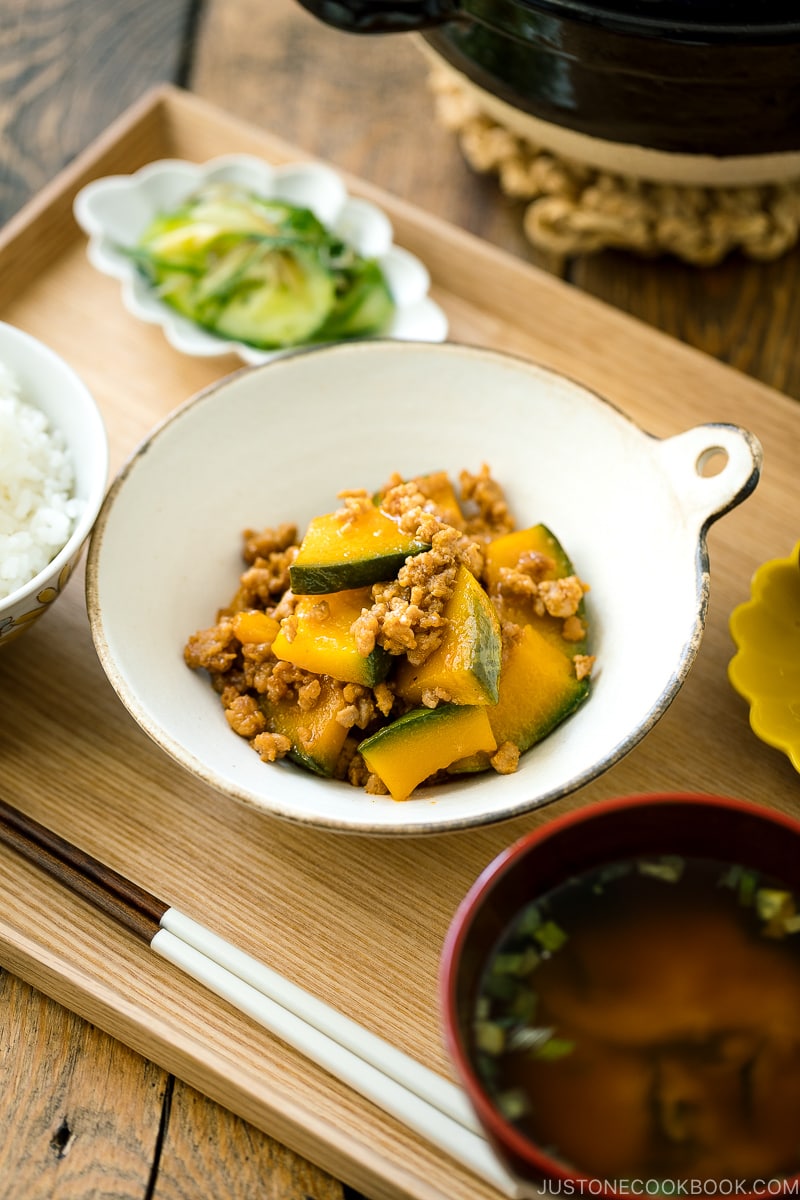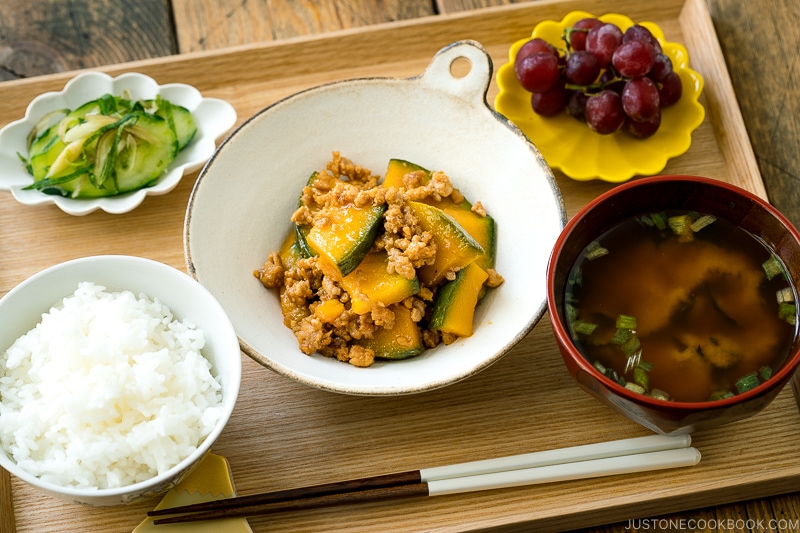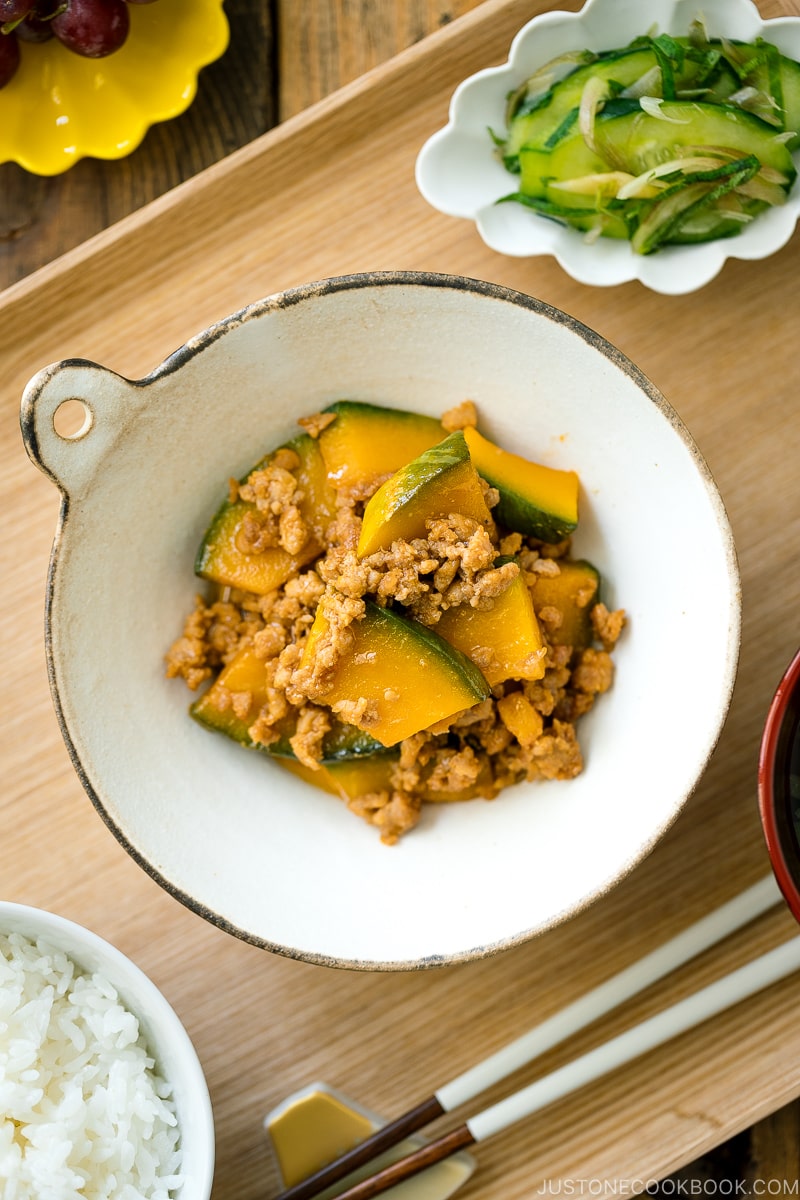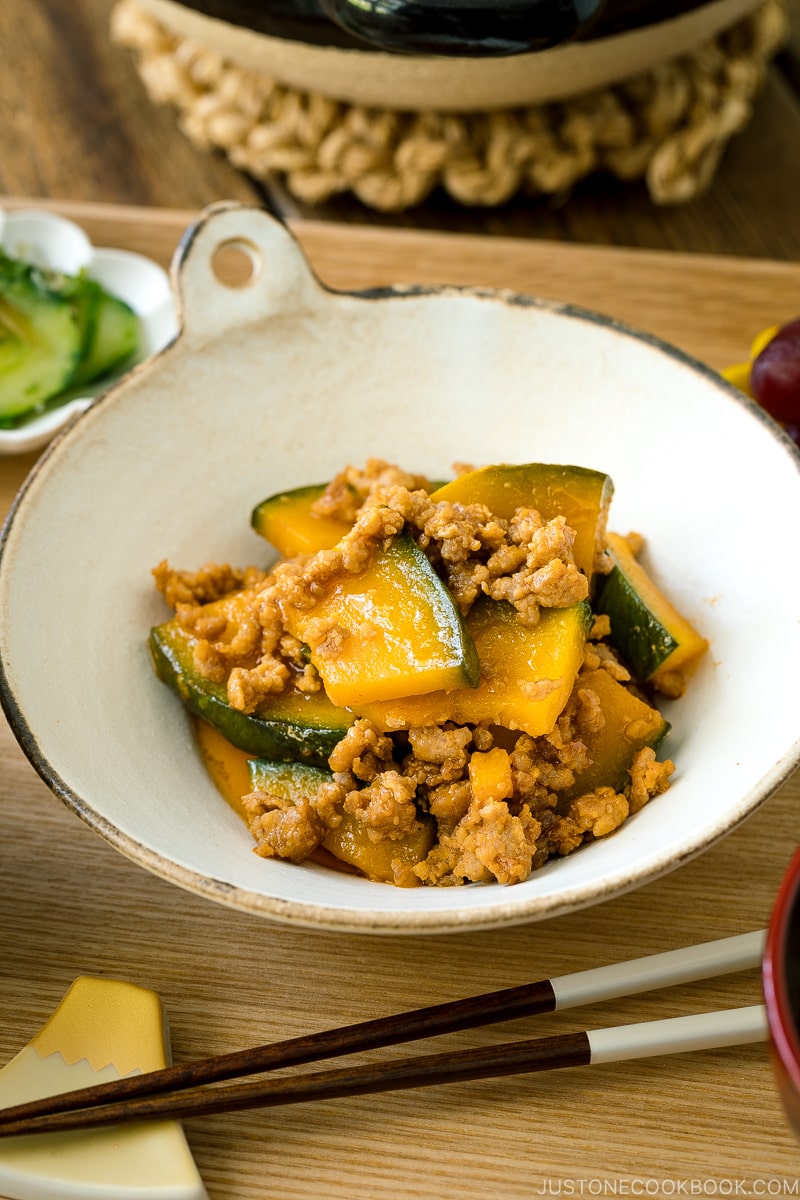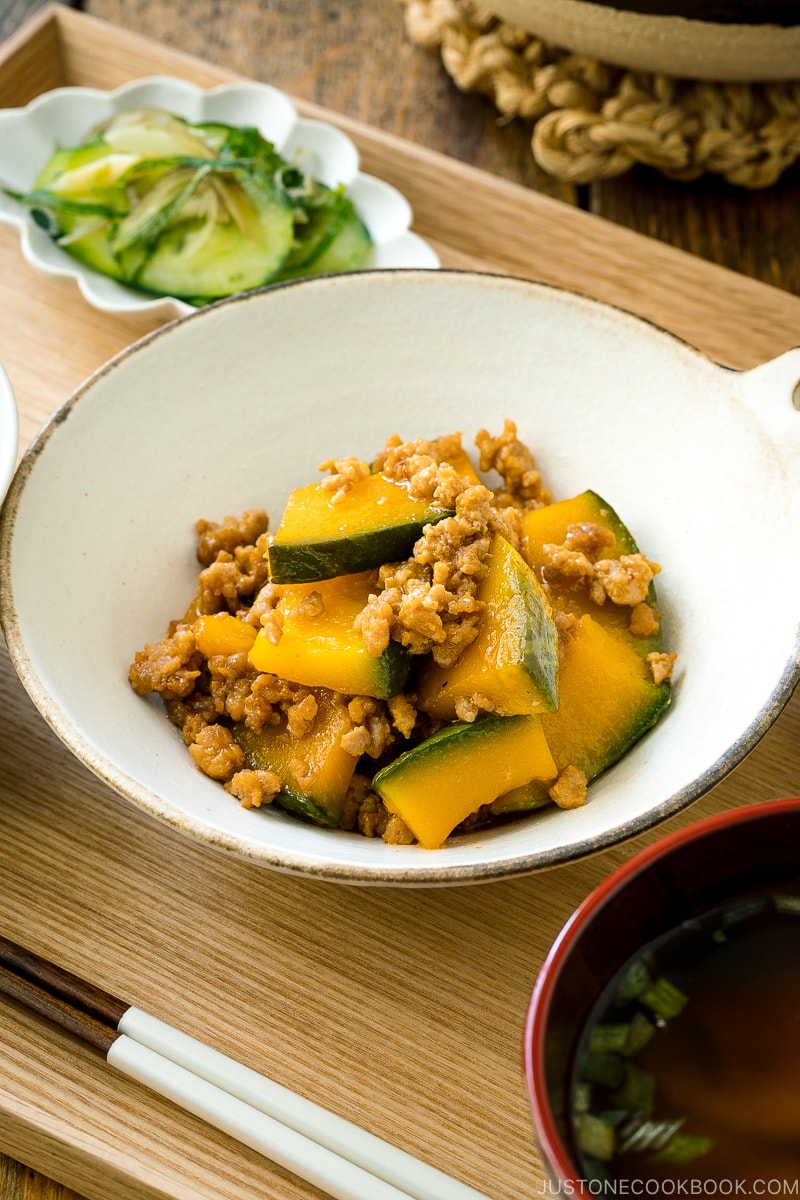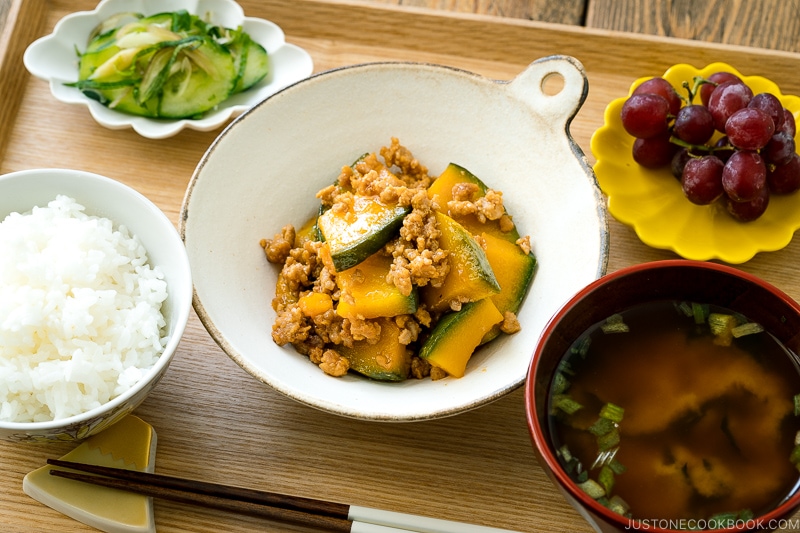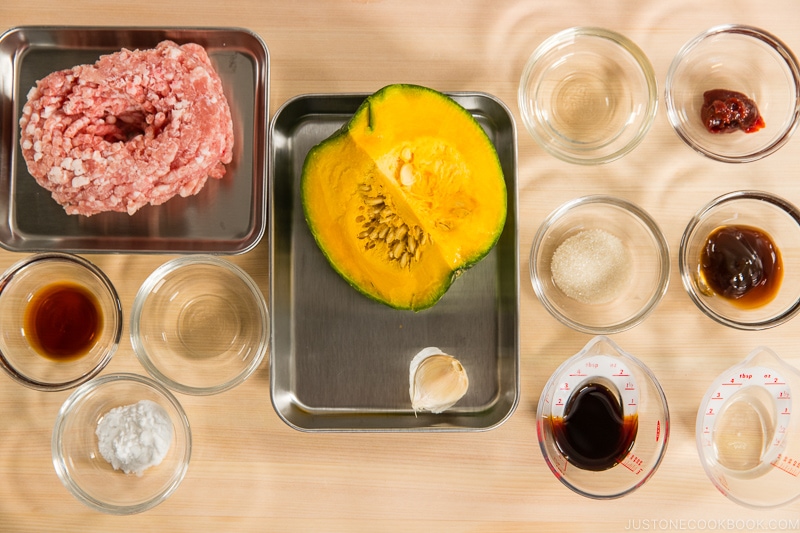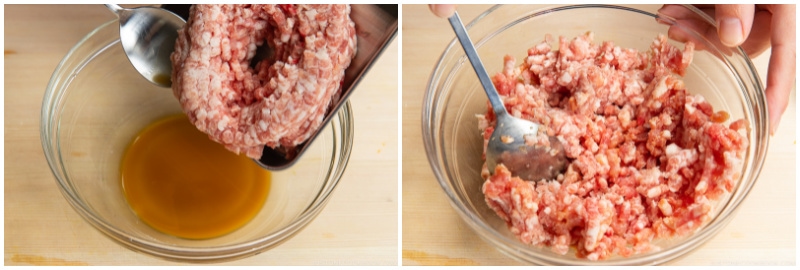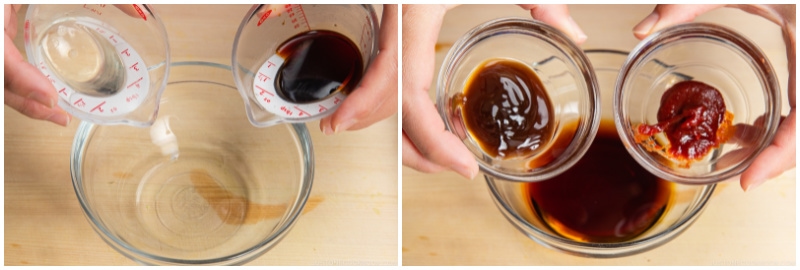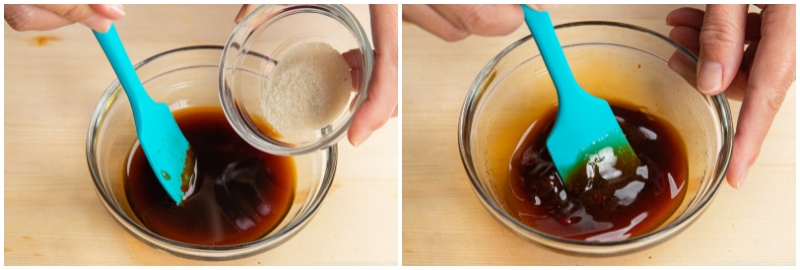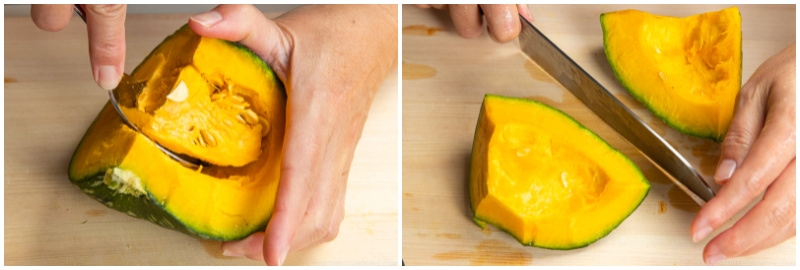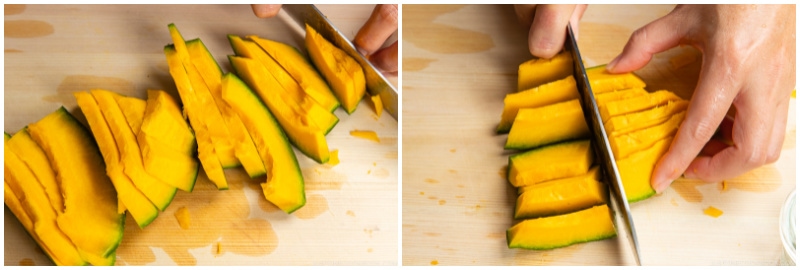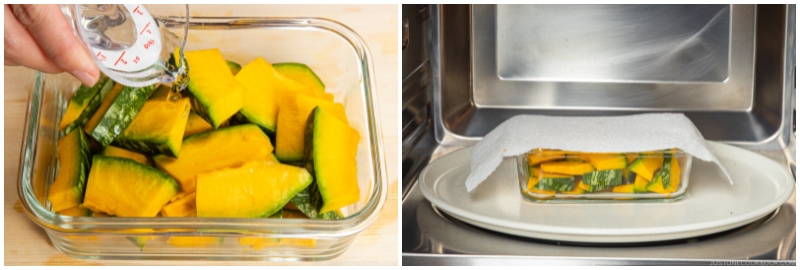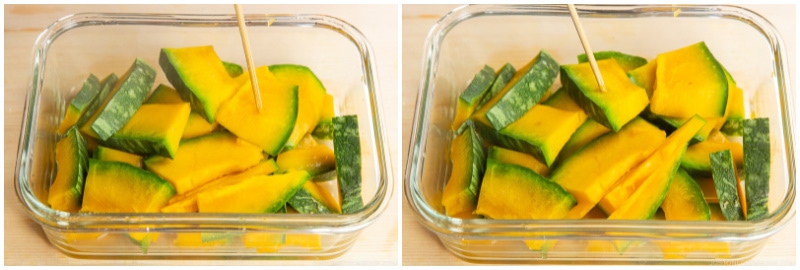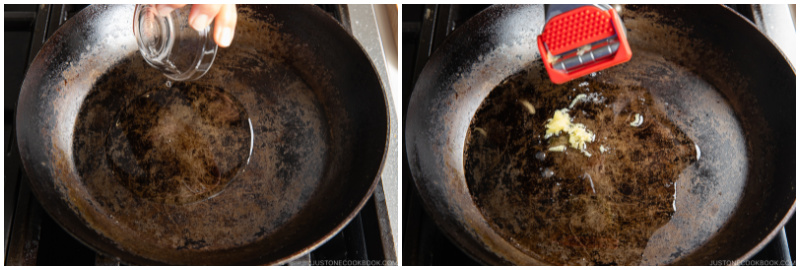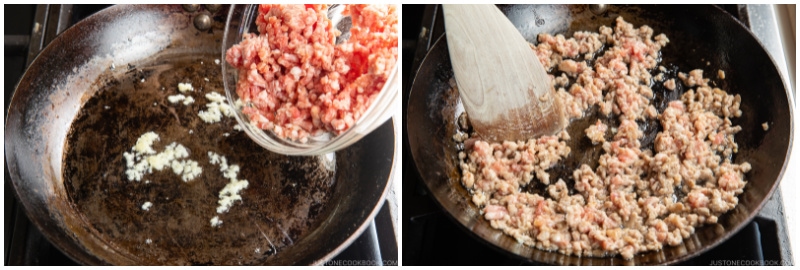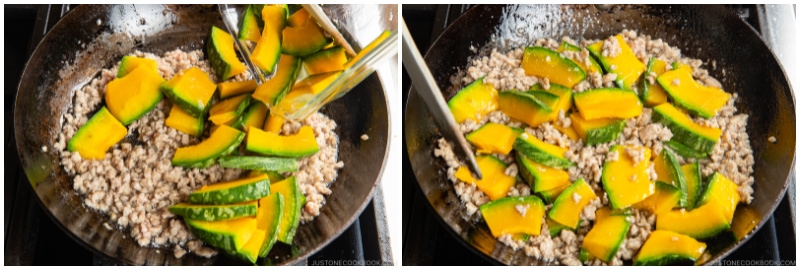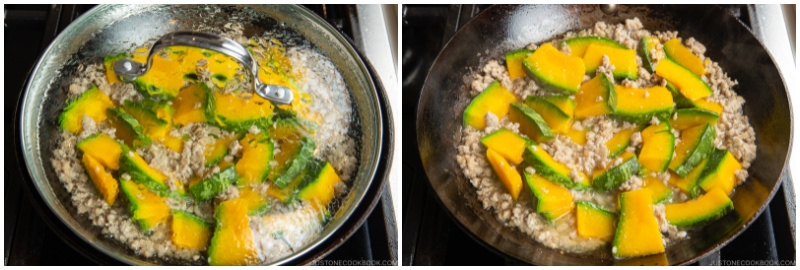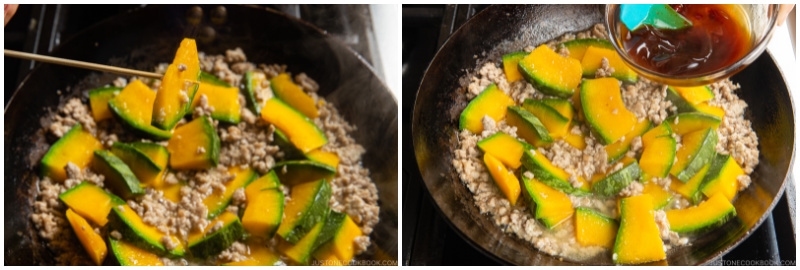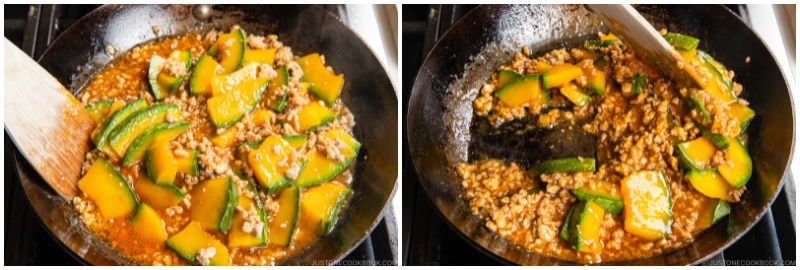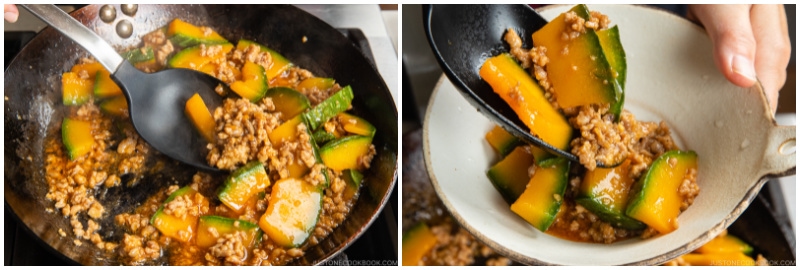Fall is here and all I can think about is all things kabocha. Soups, desserts, salads – it can do it all. In Japan, kabocha is enjoyed year-round, but here in the US, you can definitely spot this Japanese pumpkin in farmers’ markets, local pumpkin growers, and mainstream grocery stores when it’s in season. Today I’m sharing a healthy, delicious, yet lifesaving recipe – Kabocha Pork Stir-Fry (かぼちゃのそぼろ炒め).
What is Kabocha?
Kabocha (かぼちゃ, 南瓜) is a type of winter squash, a Japanese variety of the species Cucurbita maxima. In North America, it’s also called kabocha squash or Japanese pumpkin. The green outer skin is tough, but you’d be surprised by the outstanding sweetness of the deep yellow-orange flesh on the inside. Kabocha has a rich texture and flavor that is similar to a sweet potato and pumpkin combined. Some even describe the flavor as close to roasted chestnut. We treasure the squash so much that it is used in Japanese cooking where it is simmered in dashi or soups, stewed, stir-fried, deep-fried into tempura, or used in salads and desserts.
Why You’ll Love Kabocha Pork Stir-Fry
Easy and quick to prepare! Full of flavor — Make sure to cook extra rice for the second serving. Good make-ahead meal — Make a big batch and freeze it for later. It’s perfect for emergency days. Nutritious and packed with protein. Customizable seasonings — You can make it sweeter or spicier, to your liking.
Ingredients You’ll Need
Kabocha squash Ground pork — ground chicken or turkey would also work; for vegetarians, substitute with seitan or minced mushrooms Stir-fry seasoning — sake, soy sauce, oyster sauce, sugar, and gochujang (Korean chili paste or other chili sauce; use miso for a non-spicy version)
How to Make Kabocha Pork Stir-Fry
Cooking Tips
Tip #1: Marinate the Meat
Ground meat, especially pork, can get dry as moisture and juice escape during cooking. Coating the meat with potato starch (or cornstarch) helps to prevent this. A quick 5-10 minutes is all you need while prepping other ingredients. Sake, soy sauce, and potato starch is a common pork marinade for the meat. You do not need a lot. Just a thin coating is more than enough to give the meat a silky coating. Too much potato starch could make the sauce too thick.
Tip #2: Pre-cook the Kabocha
Kabocha takes some time to cook through. When it’s done cooking, it can break easily. Therefore, I highly recommend pre-cooking the kabocha to give it a head start. Then, add the kabocha to the dish and cook it together with other ingredients so it can soak up all the flavors.
Tip #3: Adjust the Seasonings
Feel free to adjust the spiciness and sweetness to taste. You can completely omit gochujang from the sauce mixture if you are not used to spicy food. I slowly increased the amount of gochujang so my kids developed a tolerance over time. This dish also works great with a bit more sweetness. However, if you prefer, you can omit the sugar completely to keep it savory. Wish to learn more about Japanese cooking? Sign up for our free newsletter to receive cooking tips & recipe updates! And stay in touch with me on Facebook, Pinterest, YouTube, and Instagram. Editor’s Note: This post was originally published on September 19, 2011. The post has been updated with new content, new images, and new video in September 2021.
